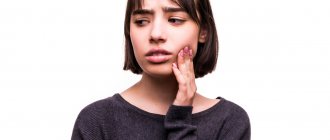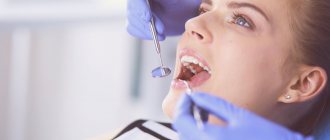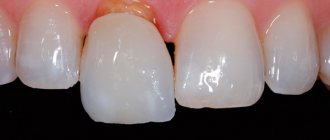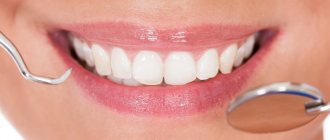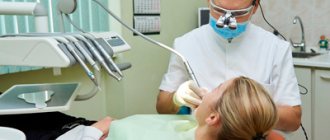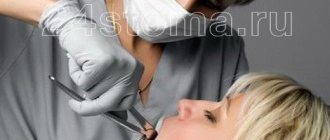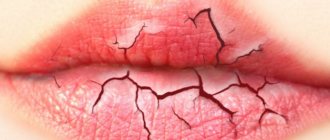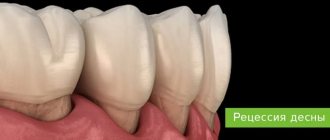Causes of Bruxism
There are several theories about the appearance of bruxism in adults. Psychological theory attaches great importance to the emotional state of a person in the development of the disease. Thus, factors favoring the development of bruxism may be the following:
- stress;
- high psycho-emotional stress;
- social and everyday disorder, troubles;
- frequent affective states.
The disease is called the disease of businessmen. People who undergo high psycho-emotional stress and take on great responsibility experience tension, which leads to involuntary muscle spasms during sleep. But it is important to understand that positive-minded patients can also suffer from this disease.
According to the neurogenic theory, the causes of bruxism in adults lie in disruption of the central and peripheral nervous system. This leads to neurological and movement disorders, muscle spasms. The validity of this theory is confirmed by the fact that, along with bruxism, sleep disorders (apnea, snoring, somnambulism) are often observed; tremor, epilepsy, enuresis - bedwetting. Tonic muscle tension can also be associated with damage to the trigeminal nerve.
Dental theory is based on the assumption that bruxism develops as a result of disturbances in the structure and function of the dental system. These include the following:
- bite defects;
- incorrect position of teeth;
- supernumerary teeth;
- crowded teeth;
- violation of the integrity of the dentition (partial adentia);
- incorrectly selected dentures and orthodontic structures;
- overestimation of fillings according to the bite;
- diseases of the temporomandibular joint.
Dental diseases lead to uneven distribution of the chewing load, and therefore the chewing muscles do not work properly. Her overexertion leads to nighttime cramps.
According to osteopathic theory, muscle contraction is an attempt by the neuromuscular system to eliminate blockage of the cranial sutures and restore craniosacral rhythm. This may be the result of birth trauma, malocclusion and posture, diseases of the cervical spine, etc.
Other theories about the origin of bruxism are not widely accepted, but some researchers link the problem to impaired nasal breathing, gastroesophageal reflux disease (GERD), parasitosis, frequent chewing of plates or pads, and other factors.
In any case, the causes of bruxism in an adult can be different, so it is difficult to do without a comprehensive diagnosis and the involvement of several specialized specialists.
Ask a Question
Doctor's recommendations
The following methods of relieving the condition can serve as an addition to the main measure or course of treatment:
- compresses, special exercises (simple, using special balls);
- massage that normalizes muscle tone;
- balanced diet;
- refusal of stimulants - coffee, tobacco, alcohol, energy drinks;
- ventilate the room before going to bed;
- relaxing baths - with pine extracts, lavender, etc.;
- moderate loads on the chewing muscles in the evening;
- Mandatory - normalization of workload, daily routine;
- psychotherapy, mastering skills to cope with stress;
- rest, full vacation if possible - for those whose professional activities are associated with neuropsychic stress.
Adults grind their teeth at night relatively less often, which is associated with the general maturity of the nervous system. However, according to statistics, from 5 to 15% of the entire adult population experience this disease. It can manifest itself episodically - during periods of increased emotional, physical stress, stress, or be observed constantly, significantly worsening the quality of life. An integrated approach allows not only to prevent tooth decay, but also to stop the main causes of bruxism; the main condition for recovery is timely seeking help from specialists.
Signs of Bruxism
An episode of nighttime teeth grinding lasts about 10 seconds. The number of episodes may vary and they may occur every night or occasionally. A characteristic symptom is grinding or clicking of teeth, but the patient himself rarely notices this feature, because sleep is not interrupted. Usually the patient learns about the problem from the lips of relatives and people living with him.
Associated symptoms of bruxism are the following:
- pain in the jaw, teeth;
- headache;
- pain in the facial muscles;
- dizziness;
- drowsiness.
Symptoms
Teeth grinding at night is the first and surest sign of bruxism.
But it is almost impossible to find out about it without outside help. To independently identify the disease, you should pay attention to the condition of the enamel, to the presence of an increased reaction to sweets, hot or cold. New holes, chips, or dentures may have become damaged for no apparent reason. All this is indirect evidence of the development of a movement disorder. There are a number of additional signs that may indicate the manifestation of night bruxism:
- throbbing pain in temples in the morning;
- dizziness and ringing in the ears;
- soreness of the jaw muscles;
- constant feeling of fatigue, drowsiness;
- discomfort in the sinuses;
- restless sleep and frequent awakenings.
USEFUL INFORMATION: Extreme drowsiness: what causes increased drowsiness
Diagnostic methods
Diagnosis of bruxism involves studying the patient’s complaints, as well as assessing indirect signs based on the results of a routine visual examination. The leading method of objective diagnosis is the use of Brux Checkers - special mouthguards that are made on the basis of a plaster cast of the patient’s jaw. These aligners allow the detection of occlusal obstructions. The doctor issues brux checkers to wear overnight, after which the patient submits them to the clinic for analysis. Using diagnostic aligners, a specialist determines which teeth bear the greatest load.
Electromyography and polysomnography methods make it possible to register the pathological activity of the masticatory muscles and confirm the diagnosis of bruxism.
But, as a rule, it is possible to understand the reasons only with the help of comprehensive diagnostics. So, in the case of bruxism in adults, psychosomatics may occur, so consultation with a psychologist or psychotherapist will be required.
Problem solving options
You cannot treat something that is not treated as a disease. But there are a number of measures that must be followed by a child suffering from bruxism. In each case, the doctor prescribes one or another treatment. Indications can be attributed to one of the following methods for eliminating bruxism. First, see a dentist and a neurologist. A neurologist will tell you what the causes of bruxism are, and the dentist will help you save your teeth by prescribing preventive methods.
Important! If a child does not want to obey you, he is not interested in boring stories about birds, do not scold him. This will make the situation worse and will not achieve the desired result.
Complications of bruxism
If the disease is observed for a long time, pathological abrasion of the tooth enamel, increased sensitivity of the enamel, and the appearance of a wedge-shaped defect, cracks and chips may develop. Constant trauma to the periodontal tissues can lead to periodontitis, loosening and loss of teeth. The service life of fillings and orthopedic structures (prostheses) in patients with bruxism is shorter due to high mechanical load.
The consequence of the disease can be dysfunction of the temporomandibular joint, accompanied by pain in the jaw and neck, hypertrophy of the masticatory muscles.
Frequent injuries to the soft tissues of the oral cavity can lead to inflammatory diseases: gingivitis, periodontitis, stomatitis.
Pathological closing of the jaws during sleep complicates orthopedic and orthodontic treatment. Many dental restoration methods may not be available to patients, so it is important to pay attention to the disease in order to be able to receive comprehensive care in case of dental diseases or tooth loss.
Special exercises and massage
Exercises and self-massage will help in the treatment of bruxism:
- Squeezing your jaw with your palms below on both sides, you need to press lightly with your fingers, massaging it in a circular motion. It is advisable to repeat such manipulations, which help relieve tension from the problem area, every day for at least 2-3 minutes.
- Chin muscle training. With your mouth slightly open, you need to push your jaw back with your fingers. The procedure is repeated several times during the day, at least 10 times in 1 approach.
- Chewing gum exercise. You need to roll the chewing gum balls from one corner of your mouth to the other. It is better to do this before going to bed, until you feel tired in your muscles, then the likelihood that your jaw will be clenched tightly in your sleep will sharply decrease.
USEFUL INFORMATION: The baby shudders in its sleep: why does this happen?
Treatment methods for bruxism
Comprehensive treatment of bruxism may include medication, psychotherapy, physical therapy, and dental methods. This approach demonstrates the greatest efficiency.
The doctor will develop a treatment plan based on the severity of the disorder. It is very important to identify the causes in order to select adequate therapy.
In the case of exposure to psychogenic factors, the basis of treatment is cognitive behavioral therapy: the patient’s mastery of relaxation and self-control methods, psychotherapeutic trainings, art therapy, etc.
Drug therapy is aimed at reducing convulsive muscle activity. The main groups of funds include:
- magnesium, calcium preparations;
- B vitamins;
- mild sedatives;
- sleeping pills, etc.
Treatment of bruxism with botulinum toxin is also classified as a medicinal method. Botulinum toxin injections block nerve impulses entering the muscles, which relieves the muscles from involuntary spasms. The effect of botulinum toxin preparations is not permanent - after several months the injections are repeated. It is important to understand that this is rather a way to combat the symptom. Injections do not help eliminate the causes of the disease.
In some cases, osteopathic treatment may be recommended: manual therapy, massage, warming up the muscles with compresses.
The dental approach involves the participation of different specialists: periodontist, dental therapist, orthopedist, orthodontist. In the absence of pathologies in the dental system, protective rubber or plastic mouth guards are made, which helps prevent the consequences of bruxism in adults. According to indications, the following activities can be carried out:
- selective grinding of teeth;
- correction of bite by wearing mouthguards, braces;
- restoration of the integrity of the dentition: prosthetics and implantation.
Correction of bite defects is possible only after the patient’s condition improves. The installation of fillings and veneers, and splinting of teeth may be postponed due to the high risk of damage to structures.
Prevention of bruxism
Bruxism can be prevented by paying attention to oral health: it is important to see a dentist in a timely manner, treat diseases of the teeth and gums, and restore the integrity of the dentition if teeth are lost. If you have bite defects or crowded teeth, you should consult an orthodontist.
Prevention involves normalizing the psycho-emotional state, giving up bad habits, coffee and energy drinks; maintaining a daily routine and proper nutrition.
Specialists from STOMA clinics will help adult patients get rid of bruxism: with us you can get help from all specialized doctors - from dental therapists to periodontists and orthodontists.

